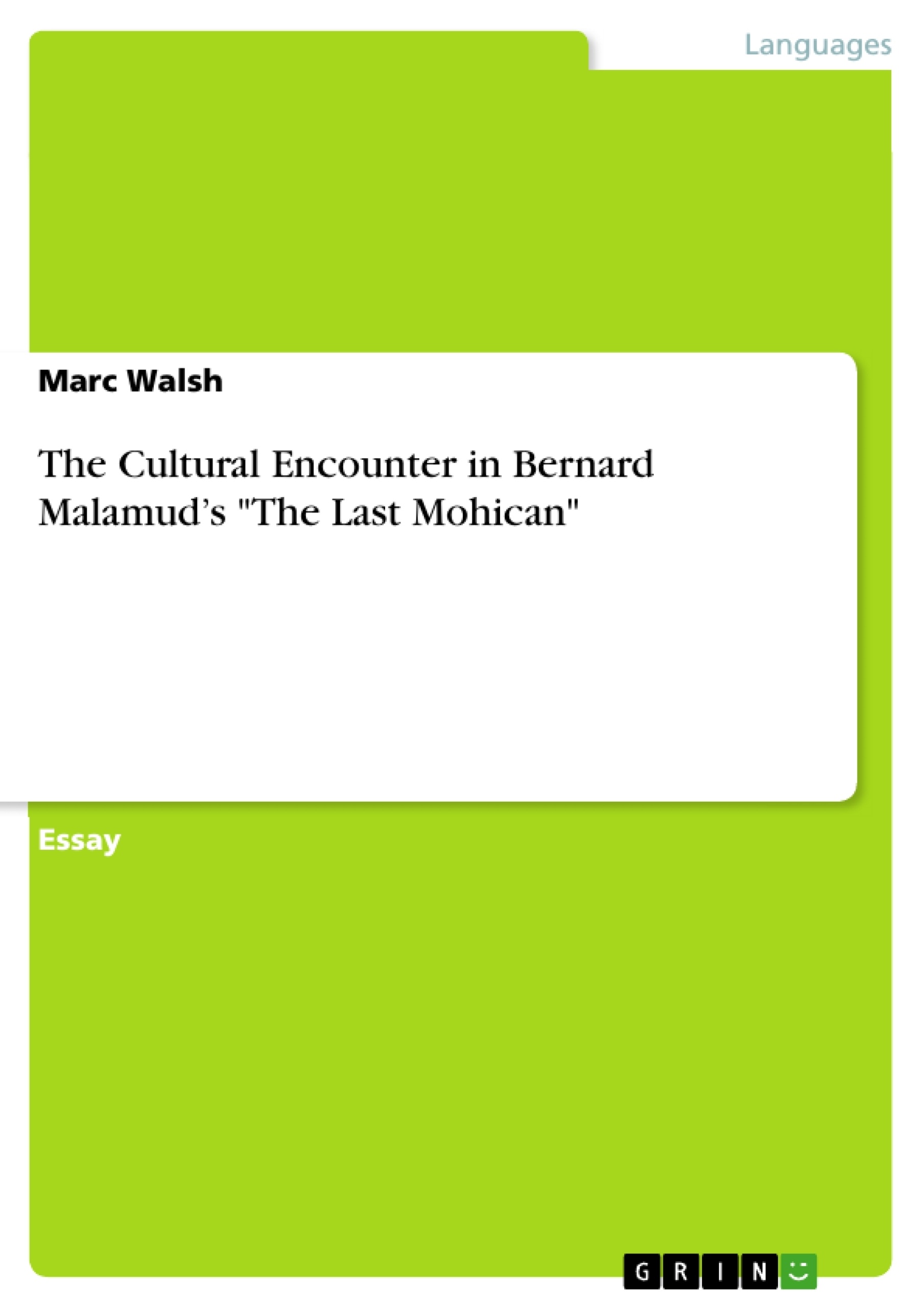The cultural encounter in Bernard Malamud’s ‘The Last Mohican’ is precipitated by the displacement of assimilated American-Jew Arthur Fidelman, an aspiring art historian, when he arrives in Europe. His cultural return places the protagonist in contact with the past and with Jewishness. This is embodied by the story’s other main character, the enigmatic and stateless Jewish peddler Shimon Susskind. It is the changing relationship between Fidelman and Susskind that provides the story’s structure and through which the themes of identity and personal responsibility to others are explored through the inner transformation that Fidelman is forced to go through when he encounters Susskind.
Inhaltsverzeichnis (Table of Contents)
- The Cultural Encounter in Bernard Malamud's 'The Last Mohican'
- The First Encounter
- The Second Encounter
- The Third Encounter
- The Turning Point
- Fidelman's Search for Susskind
- The Final Encounter
Zielsetzung und Themenschwerpunkte (Objectives and Key Themes)
This story examines the cultural encounter of assimilated American Jew, Arthur Fidelman, with his Jewish heritage while traveling in Europe. Through his interactions with the enigmatic Jewish peddler, Shimon Susskind, Fidelman confronts his identity and the responsibility he has towards others. The narrative explores the complex dynamics of assimilation, cultural displacement, and the enduring power of heritage.
- Cultural Identity and Assimilation
- Responsibility and the Burden of History
- The Significance of Encounter and Transformation
- The Role of Art and Cultural Heritage
- The Nature of Jewish Identity in the Diaspora
Zusammenfassung der Kapitel (Chapter Summaries)
- The Cultural Encounter in Bernard Malamud's 'The Last Mohican': This introductory section sets the stage for the story, introducing the main characters, Arthur Fidelman and Shimon Susskind, and the cultural context of their encounter. It highlights Fidelman's arrival in Europe and his initial struggles with his identity and the burden of history.
- The First Encounter: Fidelman encounters Susskind in Rome, and their first exchange reveals a stark contrast in their perspectives on Jewish identity and the weight of cultural heritage. Fidelman is uncomfortable with Susskind's perceived demands, while Susskind challenges Fidelman's assimilated self-image.
- The Second Encounter: The encounter continues in Fidelman's guesthouse, where they discuss responsibility to others. Fidelman initially rejects any obligation to Susskind but later gives him money, revealing his inner turmoil and the conflicting emotions he experiences.
- The Third Encounter: Fidelman feels increasingly persecuted by Susskind and attempts to distance himself, but their paths continue to cross. Susskind's presence challenges Fidelman's comfortable sense of self, forcing him to confront the complexities of his identity.
- The Turning Point: Susskind steals the first chapter of Fidelman's manuscript on Giotto, a symbolic act that represents Susskind's attempt to separate Fidelman from his gentile-influenced artistic pursuits. This theft marks a significant shift in the narrative, prompting Fidelman's pursuit of Susskind.
- Fidelman's Search for Susskind: Driven by a combination of guilt and a desire for resolution, Fidelman embarks on a frantic search for Susskind, exploring the streets and eventually venturing into the Jewish ghetto. His quest reflects his internal struggle to grapple with his cultural roots.
Schlüsselwörter (Keywords)
The story delves into themes of Jewish identity, cultural displacement, assimilation, responsibility, and transformation. It explores the complexities of the Jewish diaspora, focusing on the encounter between an assimilated American Jew and a stateless Jewish peddler. The narrative highlights the enduring power of heritage and the importance of confronting one's cultural roots.
- Quote paper
- Marc Walsh (Author), 2014, The Cultural Encounter in Bernard Malamud’s "The Last Mohican", Munich, GRIN Verlag, https://www.grin.com/document/345423



